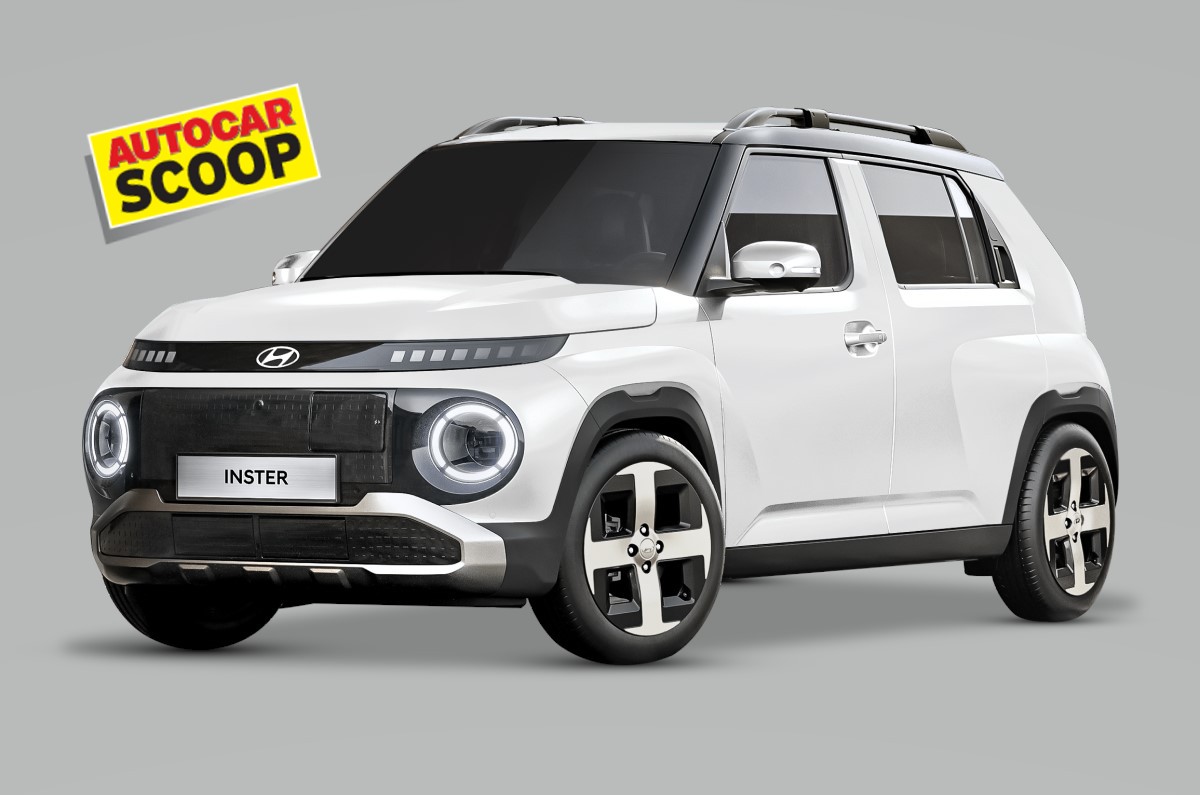Codenamed HE1i, Hyundai’s entry-level EV for India will be based on the Inster that made its debut recently.
Facing stiff competition from Tata Motors in the mainstream car market, Hyundai Motor India, the country’s second-largest carmaker, is set to challenge the homegrown carmaker actively in its domain, the volume electric vehicle segment, in the next 12-24 months.
Our sister publication Autocar Professional learns that after it enters the midsize electric SUV market with the Creta EV in the first quarter of 2025, Hyundai India has given the go-ahead by its Korean parent on a compact electric SUV to challenge Tata’s Punch EV.
- Hyundai’s Punch EV rival launch expected in 2026 second half
- Inster EV-based SUV to be made at Sriperumbudur plant
- Likely to get two battery pack options
The project, codenamed HE1i, is scheduled to hit the roads in the second half of 2026. It will be heavily modeled on the Inster EV showcased by the company at the recently concluded Busan Auto Show in South Korea.
Hyundai Motor India is adopting both, ICE-derived electric vehicle architecture (through the Creta EV) and the born-electric car platform based on the global and affordable E-GMP (K) platform (for the HE1i EV). The model will be produced from the company’s Sriperumbudur factory with localised batteries from Exide, added the sources.
Hyundai Inster: a brief overview
The Inster is based on the Casper, which Hyundai sells in more than a few international markets. The new small SUV is stretched by 230mm (over the Casper) of which, 180mm has been added to the wheelbase to accommodate a generous battery pack. At 3,825mm long, the Inster is slightly smaller than the Tata Punch EV at 3,857mm and the 3,981mm-long Citroen eC3.
Two motor options have been announced in international markets – a 97hp and a 115hp, with both making 147Nm of torque. Two NMC battery packs, a Standard 42kWh and a Long-Range 49kWh are available with WLTP claimed ranges of 300km and 355km, respectively. The India-spec HE1i is also likely to get two battery back options when it arrives.
In typical Hyundai fashion, the Inster is well-equipped. It sports a pair of 10.25-inch displays for the instrument panel and infotainment touchscreen, there’s a full ADAS suite, and features like auto climate control and a 360-deg camera with blind spot monitoring.
Hyundai India EV production, sales targets
Between the Creta EV (26,000 units) and compact electric SUV (65,000 units), Hyundai Motor India is planning an annual output of about 90,000 units. However, this includes a significant portion that has been earmarked for exports, especially when talking about the smaller SUV.
The company has committed Rs 20,000 crore for electric vehicles in the Indian market in the coming eight years. Hyundai, in its draft hearing red prospectus (DRHP) stated that it plans to calibrate its EV strategy and timeline in-line with market demand in the country by launching appropriate models. The DRHP stated that Hyundai India will launch four new electric vehicles, including a mass-market model. Its popular Creta EV will be available at the end of the current financial year.
“We are following a transition strategy, starting with the launch of high-end, premium EVs. We plan to transition towards the mass markets as the EV market and ecosystem sales increase in India. In line with this, we aim to launch four EV models in the future, including Creta EV, in the last quarter of Fiscal 2025,” the company said.
While the Creta EV and compact EV have been finalised, an EV version of its Venue compact SUV and a Grand i10 Nios-based EV are being studied, but a decision has yet to be made.
An email sent to Hyundai Motor India is yet to elicit any response.
The South Korean carmaker was among the first to introduce a global electric vehicle in India when it launched the Kona Electric in 2019. Eventually, the company brought in other top-of-the-line global EVs, such as the Ioniq 5. However, since these were imported, the company needed more numbers.
Hyundai India believes that its South Korean parent company’s diversified xEV portfolio, which includes battery EVs, hybrid EVs, plug-in hybrid EVs, mild hybrid EVs, and fuel cell EVs, will be a “key enabler” for EV strategies in India.
“We believe that our experience in developing dedicated, localised ICE models will help us leverage their know-how to develop localised xEV models for the Indian market,” the DRHP note added.
Tata Motors sells about 75,000 units annually with a portfolio of four EVs (Tiago, Tigor, Punch, and Nexon). The company is sprucing up its offerings with the new Curvv, Harrier EV, and Sierra EV launch in the next 12-24 months.
Despite adding Punch EV earlier in the year, Tata Motors has experienced a slowdown in monthly volumes. While Hyundai will pose fresh competition to Tata Motors, the maker of Nexon and Punch is keen on new players entering the market as it will help expand the fledgling electric vehicle market in India.
Tata Motors, a leader in the electric vehicle car space with a market share of over 75 percent, has gradually inched closer to Hyundai Motor India for the number 2 position, with just 30,000 units separating both companies.
If the transition to EVs gathers momentum, a fresh battle in the EV space between Hyundai and Tata Motors may well be the differentiator in the future for the number 2 position in the fast growing Indian passenger vehicle market.
Also see:
7 new Hyundais incoming, Audi Q6 e tron review, and more: Autocar India July 2024
Hyundai Venue N Line vs Toyota Taisor comparison video
Hyundai Alcazar gets up to Rs 85,000 off ahead of facelift launch

























